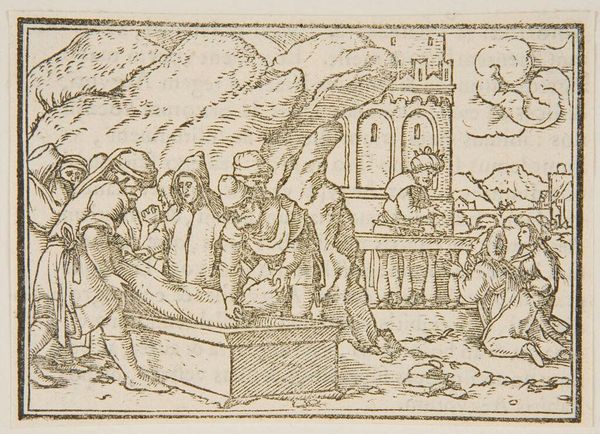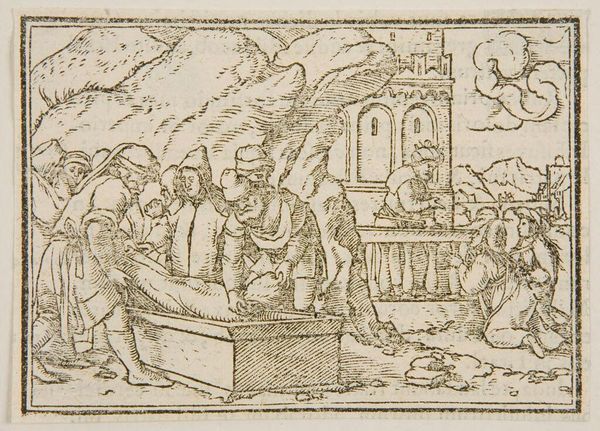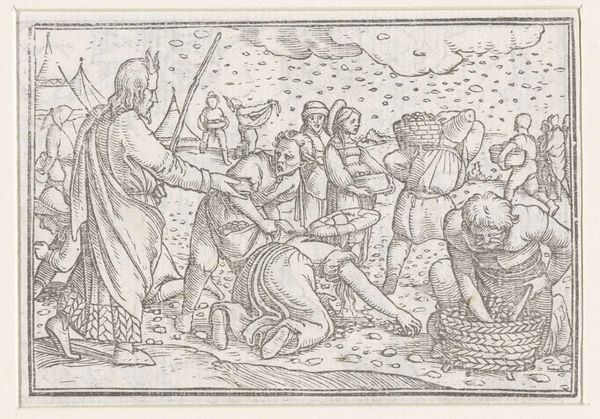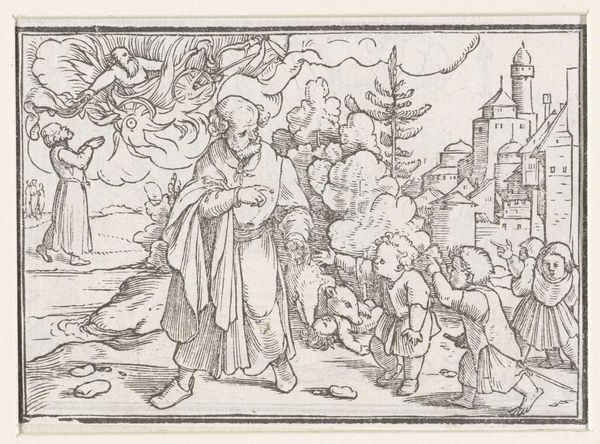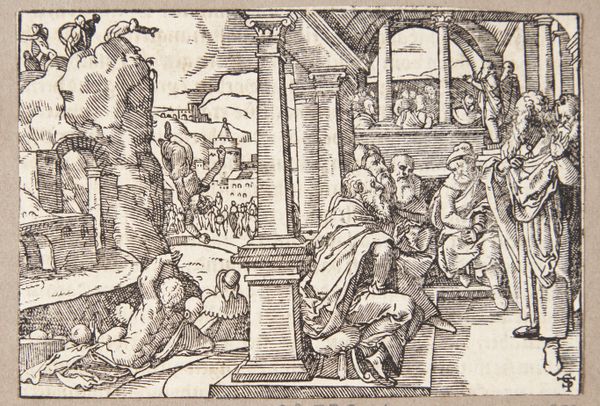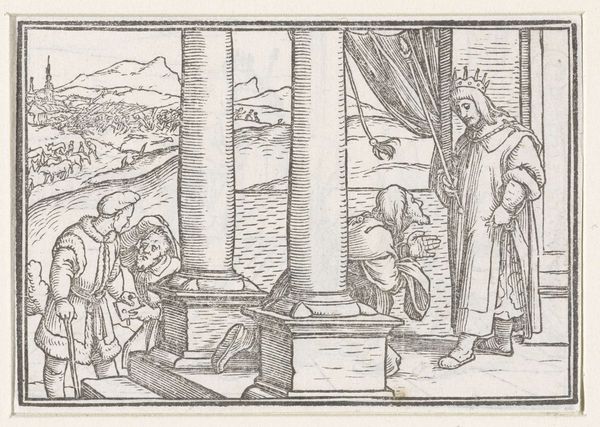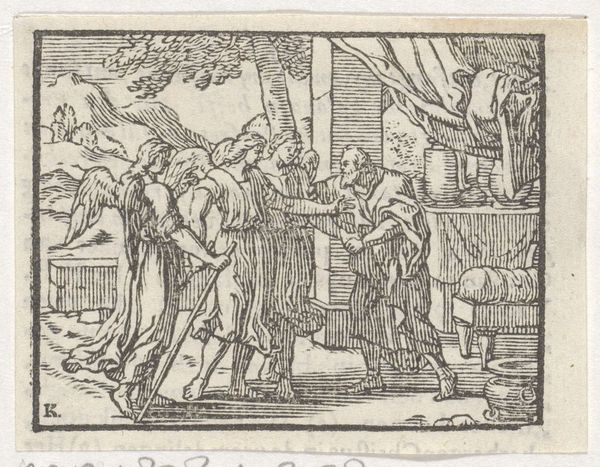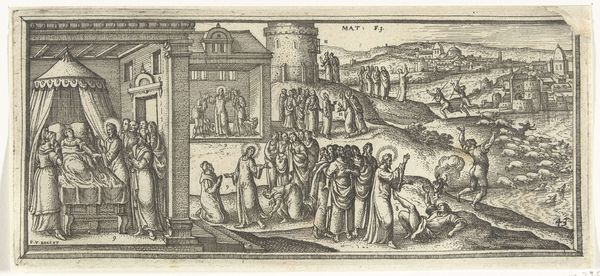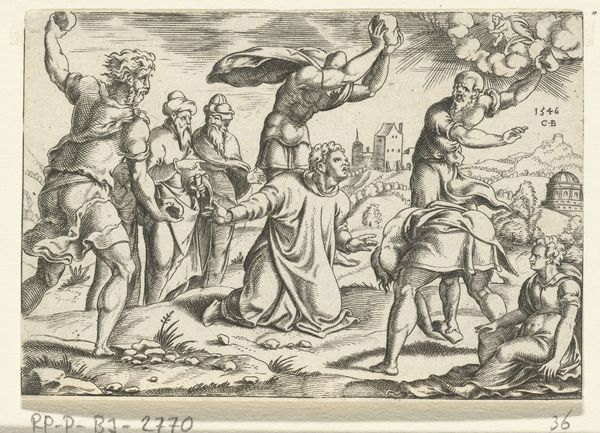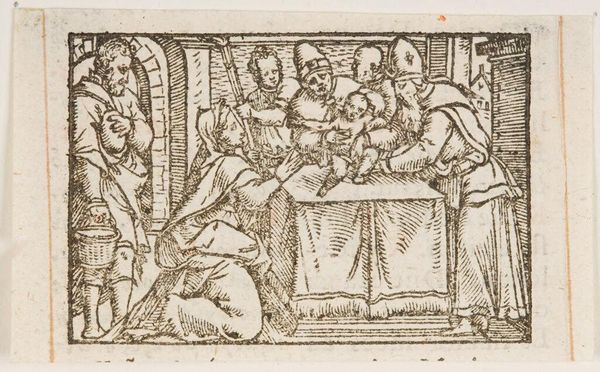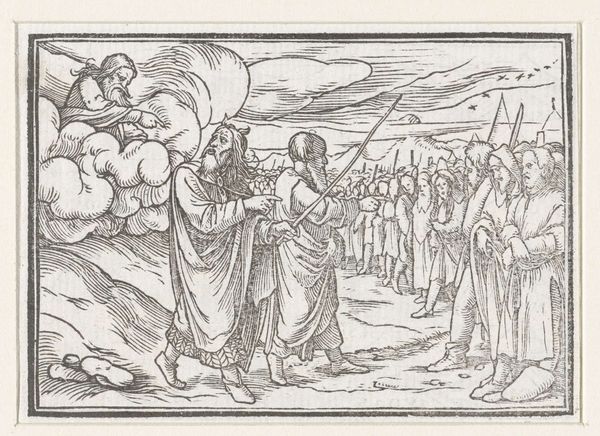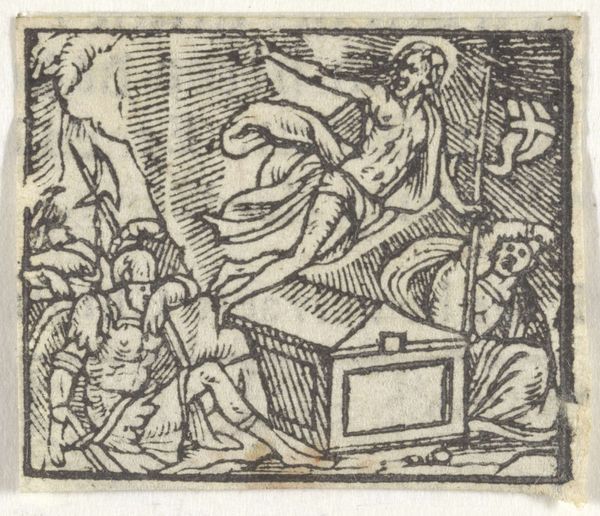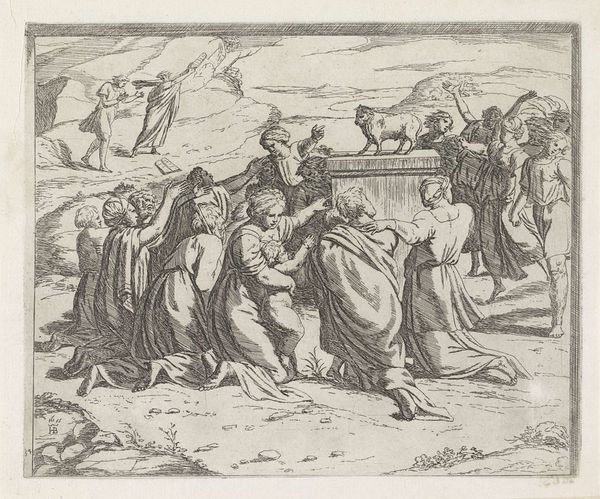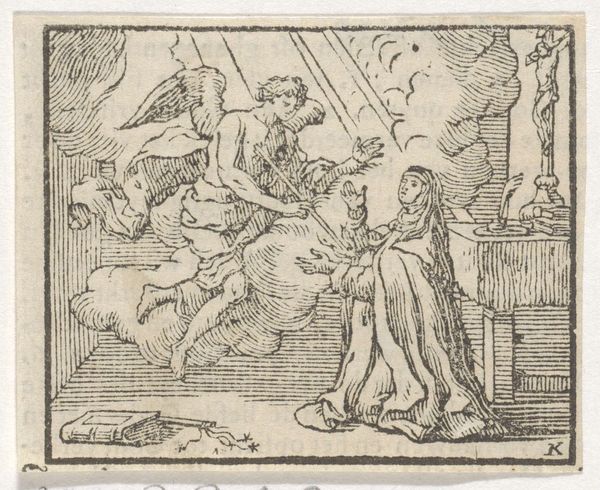
print, engraving
#
narrative-art
# print
#
pen illustration
#
pen sketch
#
figuration
#
line
#
history-painting
#
northern-renaissance
#
engraving
Dimensions: height 60 mm, width 85 mm, height 83 mm, width 98 mm
Copyright: Rijks Museum: Open Domain
Curator: What strikes me immediately about this engraving is the stark solemnity; a sort of raw grief permeates the scene. Editor: Indeed. We're looking at "The Burial of Joseph," a print created around 1538 by Hans Holbein the Younger, currently residing here at the Rijksmuseum. Curator: Holbein's line work is phenomenal! It almost feels like witnessing the procession myself. The crisp, clean hatching really intensifies the feeling of weight, doesn’t it? The literal weight of the body being lowered, the metaphorical weight of loss bearing down. Editor: Precisely. The composition itself, that layering of figures and landscape, enhances that somber effect. The rock formation looming behind the figures dominates much of the visual space, and acts as a somber spectator mirroring the emotions. The landscape flattens as it reaches toward a faraway building complex, thus framing the main action on the left, like a stage set. Curator: I keep getting drawn back to the reactions. Holbein somehow manages to depict the quiet horror of bereavement. It feels almost voyeuristic. Is that figure at the back sketching something? The banality of bureaucracy is also strangely striking as the body is interred. Editor: Well, there’s certainly an implied detachment in his placement within the scene, separated from the procession within the main pictorial plane, he certainly lends an objective tonality to this subjective tableau of emotions. Let us notice, too, that such clear lines contribute to its appeal across different media forms. Curator: Yes, like a newspaper printing almost... it also puts us squarely in mind of that Northern Renaissance austerity—I am so used to Joseph’s burial being all glowing gold and pious gestures in the Italian style. This has a real gritty truth. Even though it's about a historical figure, it has a contemporary tang to it, like Holbein is wrestling with his own mortality through the act of depiction. Editor: The universality of grief and its physical depiction. Holbein is certainly in tune with those emotions in rendering his final judgment on death. I leave feeling as though something profound has been communicated to me on a subconscious level. Curator: It is as if he wanted you to contemplate a feeling. A fleeting shadow you could carry with you always. And there lies its genius.
Comments
No comments
Be the first to comment and join the conversation on the ultimate creative platform.
